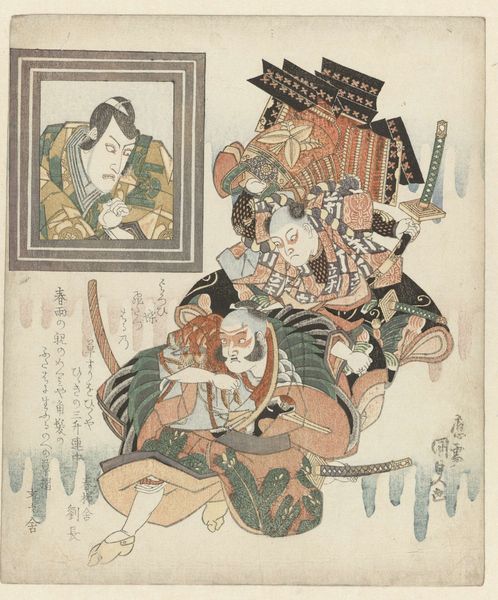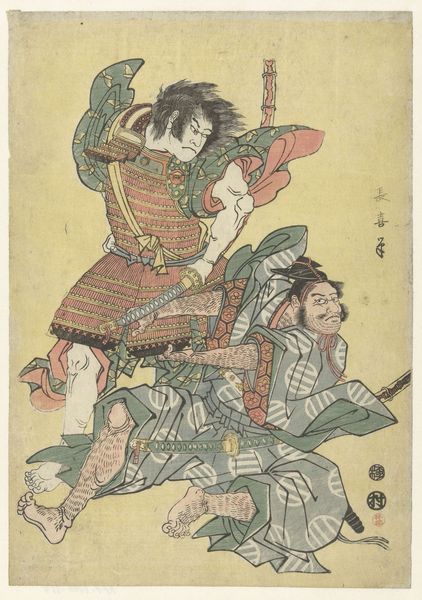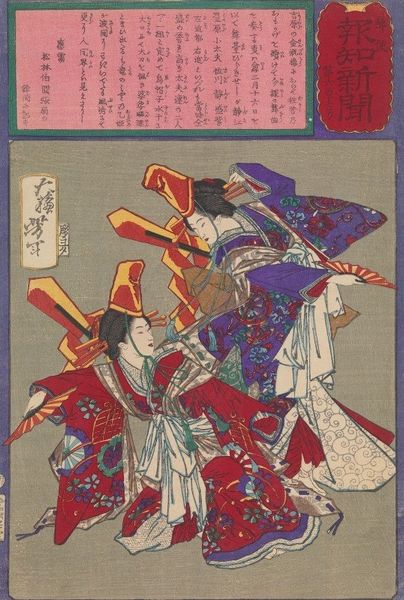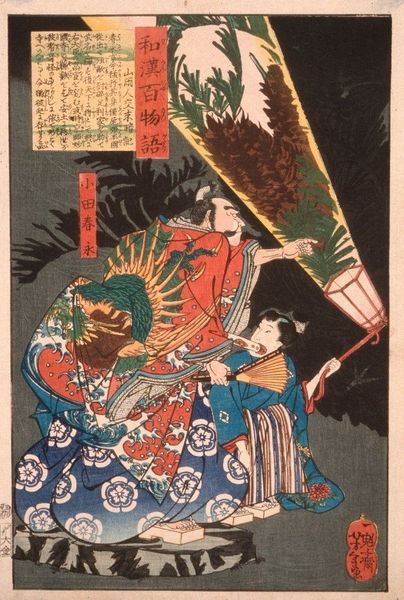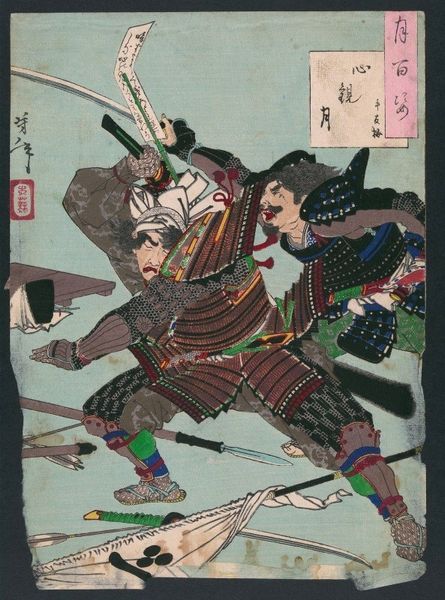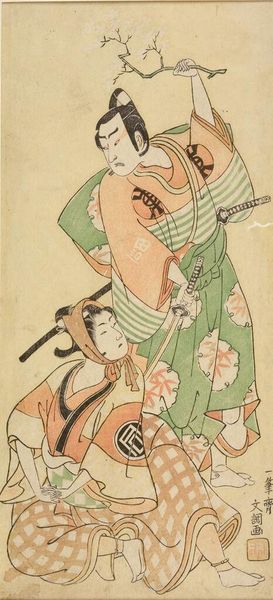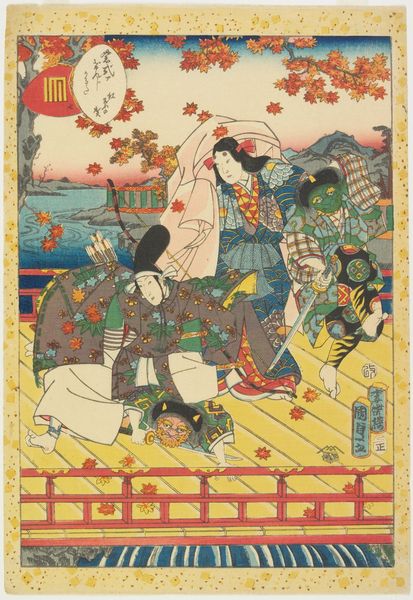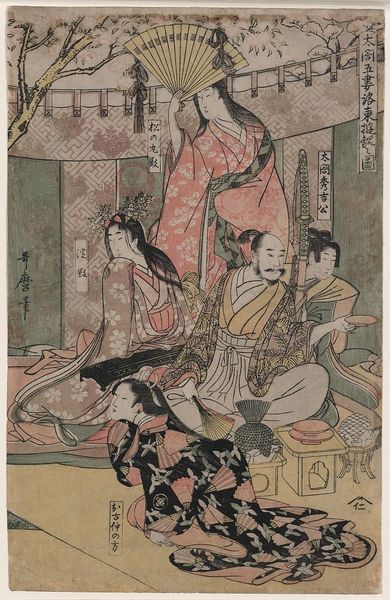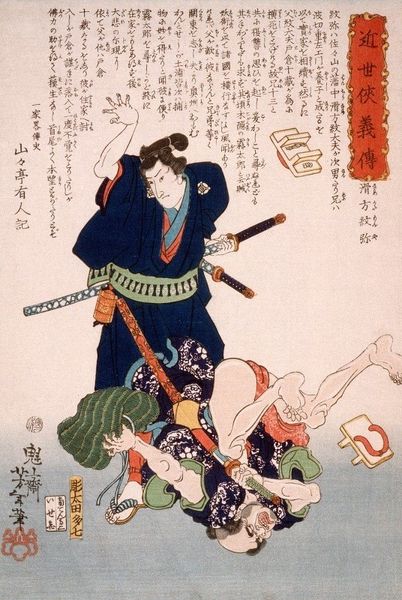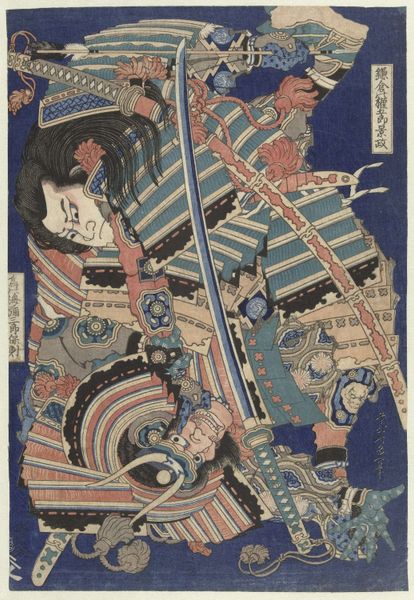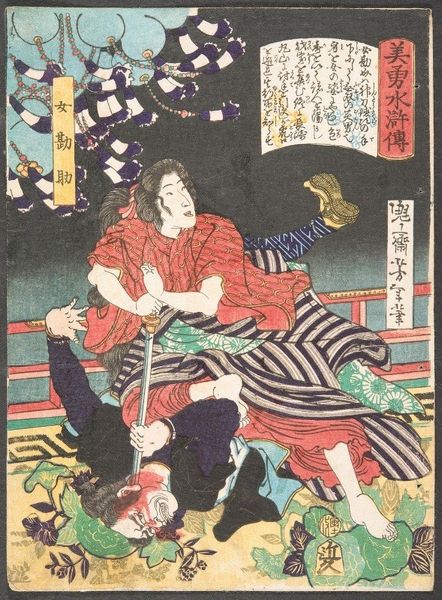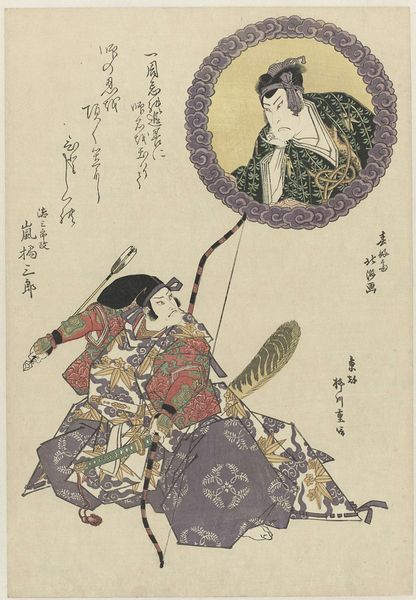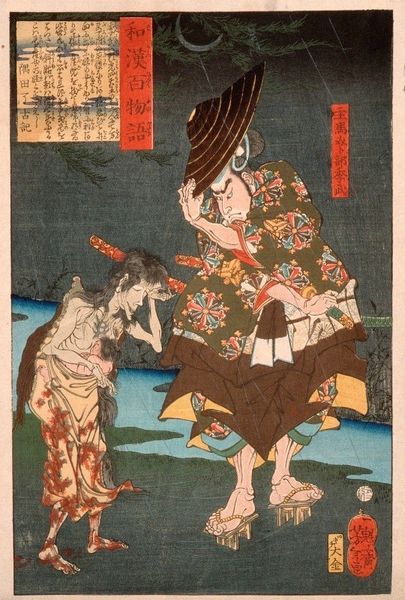
Copyright: Public Domain: Artvee
Curator: This dramatic print by Tsukioka Yoshitoshi, created in 1883, depicts Minamoto no Ushiwakamaru Battling with the Brigand Kumasaka Chōhan. Editor: My initial reaction? Dynamic and full of tension. The contrasting textures and patterns, combined with the tilted figures, immediately draw me in. There's a vibrant discordance. Curator: Indeed. Yoshitoshi's placement of this legendary fight against the backdrop of socio-political change speaks volumes. Ukiyo-e prints such as this had evolved beyond mere depictions of daily life. The medium became a repository for stories about historical figures, functioning as cultural and patriotic symbols during the Meiji Restoration. Editor: I am taken by the lines, the bold outlines emphasizing the movement and energy. See how the lines defining the figures’ garments are contrasted by flat colored segments? It gives a unique structural rhythm. How do we understand the combination of stylization and relative naturalism in Yoshitoshi? Curator: It points towards the changing tastes and audiences for such prints. While maintaining ukiyo-e aesthetics, there was also growing interest in accurate representation and historical themes as a form of cultural storytelling for a public now oriented toward an emerging modern nation. Editor: Consider the color palette. The somewhat subdued background brings forward those floral patterns on the cloth, the elaborate armor. Note, too, how it echoes similar floral motifs on the garment of the boy warrior: The chromatic harmony here emphasizes not a contrast, but the deeper connection between two formidable figures. Curator: Precisely. What we observe here is not just a clash of swords, but a meeting point between older legends and modernizing sentiments. The popularity of images like this shows us how traditions can be invoked to negotiate new cultural identities. Editor: Analyzing Yoshitoshi's formal approach reveals the layered meanings held in the very structure of this woodblock print. A remarkable demonstration of narrative complexity within an aesthetic of calculated asymmetry. Curator: Absolutely. It has demonstrated to me that considering artistic shifts like this artwork enables a much deeper comprehension of the forces that once drove the society it came from.
Comments
No comments
Be the first to comment and join the conversation on the ultimate creative platform.
